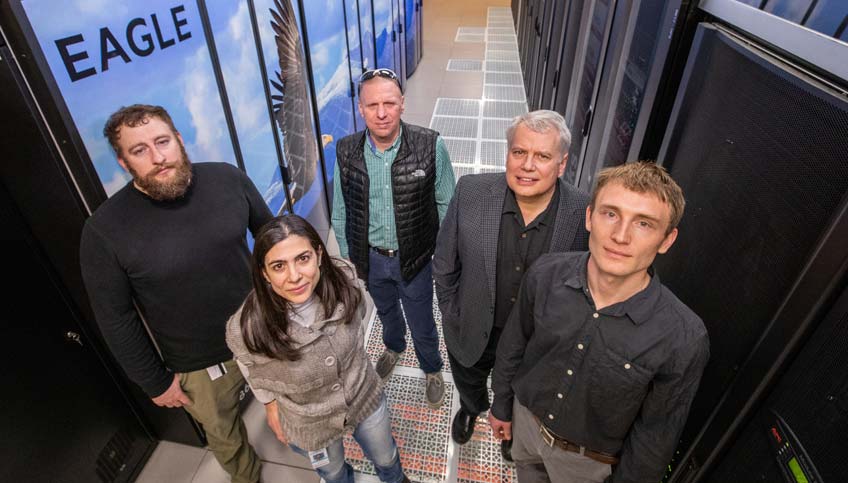NREL publishes nitride map

Research follows several years of investigating metastable materials and the potential to use them in various technologies, including semiconductors
Research involving scientists at NREL; Lawrence Berkeley National Laboratory (LBNL); University of Colorado, Boulder (CU); and other partner institutions around the USA have published 'A Map of the Inorganic Ternary Metal Nitrides' which appears in Nature Materials. The paper features a large stability map of the ternary nitrides, highlighting nitride compositions where experimental discovery is promising, and other compositions where nitride formation would be unlikely.
The new nitrides research follows several years of investigating metastable materials and the potential to use them in various technologies, including semiconductors.
Wenhao Sun, lead author of the paper and staff scientist at LBNL, likened materials discovery to the world exploration of bygone days. “Sailing into the unknown was a very risky endeavour,” Sun explains, “and in the same way, exploration of new chemical spaces can also be risky. If you go into the lab and mix different elements together, you might make a new compound. Or you might not. If you don’t find a new material where you are looking, it can be a big waste of time and effort. Maps help to guide explorers, allowing them to navigate better. Here, we built a chemical map to guide the exploratory synthesis of nitrides.”
The research also provides another dimension to the periodic table of elements by indicating a group of metals’ propensity to form stable or metastable ternary nitrides. Calcium, for example, stood out for its ability to create a nitride. So did lithium. The scientists also were able to discount metals that won’t be useful in nitride research. “Gold doesn’t want to combine with nitrogen,” said Aaron Holder a research professor who holds a joint CU-NREL appointment and is a co-author of the new paper., “and adding another metal is not going to stabilise it enough to make it happen.”
Now possessed with a greater understanding of nitrides, researchers can move forward with determining their best uses. The Nobel Prize for physics in 2014 was awarded to a trio of researchers who combined several layers of GaN to invent a blue LED. Coupling their blue light with efficient phosphors allowed the creation of long-lasting and energy-efficient white LED bulbs. The nitrides team sees even more applications on—and beyond—the horizon.
“Certainly, these materials have many possible new functional applications,” Sun said. “Some of them are semiconductors and others might be superconductors. Many of them might have applications we haven’t even dreamed of yet. There are a lot of directions for this to go.”
Exploring Metastable Materials
Metastable materials are those that, over time, will shift to become more stable. Diamonds, for example, are metastable as they would eventually turn into graphite, a more stable polymorph form of carbon. But the amount of time that takes is considerable—millions of years in this example—so researchers should not discount the use of metastable compounds.
“If you only do materials design with stable materials,” Sun said, “your choices are limited. But if you start thinking about which metastable materials can be made, you increase your design space.”
The world of ternary nitrides hasn’t been thoroughly explored because the compounds—consisting of nitrogen and two metals—are difficult to synthesize. The prediction of the new ternary nitrides relied on computational materials science, using machine-learning algorithms to map previously uncharted spaces. This accelerated the process compared to the traditional trial-and-error method.
Using high-throughput computational materials science, they first considered 6,000 potential nitride compounds by substituting known nitrides with new elements. After checking the stability of these possible nitrides, they predicted 203 new stable ternary nitride compounds. Until now, only 213 stable nitrides were known to exist.
Guided by the map, Zakutayev and his team were initially able to synthesise seven new ternary nitrides in the laboratory. Several more nitrides have been synthesised since the paper was written.
Pictured above is the research team of (from left) Aaron Holder, Elisabetta Arca, Stephan Lany, Bill Tumas, and Andriy Zakutayev stand near the Eagle Supercomputer in NREL’s Energy Systems Integration Facility. The researchers discovered hundreds of nitrides not previously known to exist. Photo by Werner Slocum/NREL


































